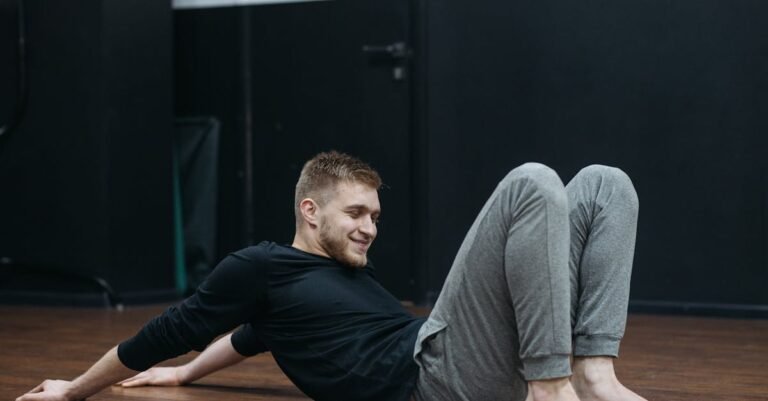Table of Contents
- Strength Training For Women: Getting Started
- Introduction: Why Should Women Embrace Strength Training?
- Ready to Lift? Your First Steps into Strength Training
- The Nitty Gritty: Understanding Basic Exercises & Form
- Putting It All Together: Building Your First Routine
- Fueling Your Fire: Nutrition Basics for Strength
- Playing it Safe: Listening to Your Body & Avoiding Injury
- Conclusion: Your Strength Journey Starts Now!
- Frequently Asked Questions (FAQs)
Strength Training For Women: Getting Started
So, you’re thinking about diving into the world of strength training? Awesome! Maybe you’ve seen incredibly strong women lifting heavy things online, or perhaps your doctor mentioned the bone health benefits. Whatever sparked your interest, you’re in the right place. Getting started with strength training can feel like trying to read a map in a foreign language – confusing, maybe a little intimidating. But guess what? It doesn’t have to be. This guide is your friendly co pilot, here to navigate the basics and show you just how empowering and *fun* lifting weights can be.
We’re going to break it all down, step by step. Forget the confusing jargon and the images of super intimidating, overly muscled figures. We’re talking about building *your* strength, for *your* body, on *your* terms. Ready to feel stronger, more confident, and maybe even discover a new passion? Let’s get lifting!
Introduction: Why Should Women Embrace Strength Training?
For too long, the weight room felt like exclusively male territory. Cardio machines were often seen as the ‘go to’ for women seeking fitness. But oh, how times have changed! More and women are discovering the incredible, life altering benefits of picking up weights, and it’s about so much more than just aesthetics. Strength training is a powerful tool for transforming not just your body, but your overall health and mindset.
It’s about reclaiming power, building resilience from the inside out, and realizing your physical potential. It’s about functional fitness – being able to carry all the grocery bags in one trip (the ultimate life goal, right?), lift your kids without throwing your back out, or simply move through life with more ease and less pain. Let’s debunk some myths and uncover the real magic.
Busting the Big Myths About Women and Weights
Okay, let’s tackle the elephant in the room, or rather, the myth in the weight room: “Won’t lifting weights make me bulky?” This is probably the number one fear holding many women back. Let’s be crystal clear: it is incredibly difficult for most women to build massive, “bulky” muscle mass. Why? Hormones! Women simply don’t have the same levels of testosterone as men, which is the primary hormone responsible for significant muscle hypertrophy (growth).
Building the kind of muscle you see on female bodybuilders requires extremely specific, intense training protocols, meticulous nutrition plans often involving significant calorie surpluses, and sometimes, unfortunately, performance enhancing substances. For the average woman engaging in regular strength training (2 to 4 times a week), the result isn’t bulk, but rather a leaner, stronger, more toned physique. You’ll build functional muscle that shapes your body, improves your metabolism, and makes you feel capable, not overly muscular unless that is your specific, dedicated goal achieved through years of hard work.
Other myths? That it’s dangerous or you’ll inevitably get injured. While injury is a risk in *any* physical activity (you can twist an ankle walking down the street!), strength training done with proper form and gradual progression is remarkably safe. In fact, it often *prevents* injuries by strengthening muscles, tendons, and ligaments that support your joints. The key is learning correct technique and not trying to lift too much, too soon. Intimidation is another factor – the weight room can seem complex. But starting simple, maybe even at home, makes it totally accessible.
More Than Just Muscles: The Incredible Real Benefits
While looking and feeling strong is great, the benefits of strength training run so much deeper. It’s a holistic practice that positively impacts numerous aspects of your well being.
Stronger Bones, Happier Joints
This is a HUGE one, especially for women. As we age, particularly post menopause, bone density naturally decreases, increasing the risk of osteopenia and osteoporosis. Think of your bones like a muscle – they need stress to adapt and get stronger. Strength training provides exactly that mechanical stress. When your muscles pull on your bones during exercises like squats or overhead presses, it signals your body to lay down more bone mineral. It’s like telling your internal construction crew, “Hey, we need reinforcements here!” This leads to denser, stronger bones that are less susceptible to fractures. Furthermore, stronger muscles around your joints (knees, hips, shoulders) act like natural braces, providing better support and potentially reducing joint pain.
Revving Up Your Metabolism
Want your body to burn more calories even when you’re relaxing on the couch? Strength training can help make that happen. Muscle tissue is metabolically active, meaning it requires energy (calories) just to maintain itself, unlike fat tissue which is relatively inert. The more lean muscle mass you have, the higher your basal metabolic rate (BMR) – the number of calories your body burns at rest. While cardio burns calories *during* the activity, building muscle through strength training turns your body into a more efficient calorie burning machine 24/7. This makes weight management easier and more sustainable in the long run.
Building Mental Toughness & Confidence
The connection between physical strength and mental resilience is undeniable. Every time you push through a challenging set, lift a weight you previously couldn’t, or simply show up for your workout when you didn’t feel like it, you’re building mental fortitude. You learn discipline, perseverance, and the power of incremental progress. This translates directly into other areas of your life.
And the confidence boost? It’s palpable. There’s something incredibly empowering about realizing your own physical strength. It changes how you carry yourself, how you approach challenges, and how you feel in your own skin. It’s not just about *looking* strong; it’s about *feeling* capable, powerful, and in control of your body. Plus, exercise, including strength training, is a known mood booster, releasing endorphins that combat stress and anxiety.
Ready to Lift? Your First Steps into Strength Training
Okay, convinced yet? Thought so! Now comes the exciting part: actually starting. Don’t worry, we’ll take it slow and steady. Think of it less like a sprint and more like building a solid foundation for a house – it takes time, planning, and the right approach.
Setting Goals That Actually Stick
Before you even touch a weight, let’s talk goals. Why do you want to start strength training? “Getting stronger” is great, but a bit vague. Let’s make it SMART: Specific, Measurable, Achievable, Relevant, and Time bound.
- Specific: Instead of “get stronger,” try “be able to do 10 push ups on my toes” or “deadlift my bodyweight.”
- Measurable: How will you track progress? Lifting heavier weight, doing more reps, improving form, noticing clothes fit differently?
- Achievable: Be realistic! Don’t aim to squat 200 pounds in your first month. Start with attainable milestones, like mastering bodyweight squat form or consistently working out twice a week for a month.
- Relevant: Does your goal align with your ‘why’? If you want functional strength, maybe focus on mastering compound movements. If it’s confidence, perhaps achieving a certain number of reps is your target.
- Time bound: Give yourself a timeframe. “Master bodyweight squats in 4 weeks” or “Increase my dumbbell row weight in 6 weeks.” This adds a sense of urgency and makes tracking easier.
Write your goals down! Seeing them makes them real. And celebrate the small wins along the way – completing your first full workout, adding a tiny bit more weight, nailing that tricky form cue. Progress, not perfection, is the name of the game.
Choosing Your Training Ground: Gym vs. Home
Where will you unleash your newfound strength? Both gyms and home setups have their perks and drawbacks. There’s no single “right” answer; it depends entirely on your budget, personality, schedule, and preferences.
The Gym Scene: What to Expect
Pros:
- Wide Variety of Equipment: Access to everything from barbells and dumbbells to machines, cable stations, and kettlebells. This allows for endless variety and easier progression.
- Dedicated Space: Mentally separates workout time from home life.
- Potential for Community/Motivation: Seeing others work hard can be inspiring. Classes and trainers are often available.
- Fewer Distractions (Maybe): Less likely to get sidetracked by household chores (though people watching can be its own distraction!).
Cons:
- Cost: Membership fees can add up.
- Commute Time: Factor in travel to and from the gym.
- Intimidation Factor: Can feel overwhelming for beginners, especially during peak hours.
- Waiting for Equipment: Annoying during busy times.
- Hygiene Concerns: Shared equipment requires diligence with wiping down.
Creating Your Home Haven: Is It Right for You?
Pros:
- Convenience: Workout whenever you want, no travel time. Huge plus for busy schedules!
- Comfort & Privacy: Train in your PJs if you want! No worrying about others watching.
- Cost Effective (Long Term): Initial investment in equipment can be cheaper than years of gym fees. You can start small.
- Your Music, Your Rules: Blast whatever motivates you.
Cons:
- Limited Equipment (Initially): You’ll likely start with basics, which might limit exercise variety or heavier lifting potential without further investment.
- Space Requirements: Need dedicated space, even if it’s just a corner.
- Distractions: Easy to get sidetracked by TV, family, pets, or chores.
- Requires Self Motivation: No external environment pushing you.
- Lack of Spotter/Guidance: Need to be extra careful with form, especially when lifting heavier.
Consider your lifestyle. If convenience is king, home might win. If you thrive on variety and external motivation, the gym could be better. You can always start one way and switch later!
Gearing Up: What You Really Need (and What You Don’t)
You don’t need a ton of fancy gear to start strength training effectively, especially if you’re beginning at home.
- Your Body: Seriously! Bodyweight exercises (squats, lunges, push ups, planks) are fantastic starting points and require zero equipment.
- Comfortable Clothes & Shoes: Wear something you can move freely in. Flat soled shoes (like trainers or specific lifting shoes) are generally better than squishy running shoes for stability during lifts.
- Water Bottle: Hydration is key!
- Optional but Recommended (especially for home):
- Resistance Bands: Versatile, affordable, and great for adding resistance to bodyweight moves or assisting with exercises like pull ups later on.
- Adjustable Dumbbells: A space saving and cost effective way to progressively add weight compared to buying individual pairs.
- A Mat: For floor exercises like planks or glute bridges.
Things you likely don’t need right away: lifting belts, gloves, specialized shoes, expensive supplements, or a full squat rack (unless you’re serious about barbell training immediately). Start simple, master the basics, and add equipment as your needs and budget allow.
The Nitty Gritty: Understanding Basic Exercises & Form
Alright, let’s talk movement! Strength training revolves around performing exercises that challenge your muscles. Instead of thinking about isolating tiny muscles, focus on fundamental human movement patterns. Mastering these will give you the most bang for your buck, building functional strength efficiently.
Mastering the Fundamental Movement Patterns
Think of these as the building blocks of almost any strength exercise:
Squats: Your Body’s Natural Seat
What it works: Quads, glutes, hamstrings, core.
Why it matters: It mimics sitting down and standing up – fundamental for daily life! Builds lower body power and stability.
Getting started: Begin with bodyweight squats. Stand with feet shoulder width apart, toes slightly pointed out. Keep your chest up and core engaged. Initiate the movement by pushing your hips back as if sitting in a chair, bending your knees. Lower until your thighs are parallel to the ground (or as low as comfortable with good form), then drive through your heels to stand back up. Avoid letting your knees cave inward.
Hinges: Powering Up with Deadlifts & Co.
What it works: Glutes, hamstrings, lower back, core.
Why it matters: Teaches you to lift objects safely using your powerful posterior chain (backside muscles), not just your lower back. Essential for picking things up.
Getting started: Try bodyweight Good Mornings or Romanian Deadlifts (RDLs) with light dumbbells or even a broomstick. Stand tall, feet hip width apart, slight bend in the knees. Keeping your back straight and core tight, push your hips backward, letting your torso hinge forward. Feel the stretch in your hamstrings. Go as low as you can without rounding your back, then squeeze your glutes to return to the starting position.
Pushes: Building Upper Body Strength
What it works: Chest, shoulders, triceps, core.
Why it matters: Pushing things away – opening doors, getting up off the floor.
Getting started: Push ups are king! Start on your knees or against a wall or elevated surface (like a countertop) if floor push ups are too challenging. Place hands slightly wider than shoulder width. Keep your body in a straight line from head to knees/heels, core engaged. Lower your chest towards the surface, elbows tracking back slightly (not flared out wide), then push back up. Dumbbell bench presses or overhead presses are other great options.
Pulls: Balancing It Out with Rows & Pulls
What it works: Back (lats, rhomboids, traps), biceps, core.
Why it matters: Crucial for posture, balancing out all the pushing movements, and pulling things towards you (like opening a heavy door).
Getting started: Bodyweight rows (using a sturdy table or suspension trainer) or dumbbell rows are excellent. For dumbbell rows, place one knee and hand on a bench or chair for support. Let the dumbbell hang straight down with your other arm. Keeping your back straight and core tight, pull the dumbbell up towards your hip, squeezing your shoulder blade. Lower with control. Resistance band pull aparts are also great for shoulder health.
Why Perfecting Your Form is Everything
Listen up, because this is arguably the most important part: form over weight, always. Lifting heavy weights with sloppy technique is a fast track to injury and won’t effectively target the muscles you intend to work. It’s like trying to build that sturdy house on a shaky foundation – it just won’t hold up.
Focus on learning the correct movement pattern before adding significant weight. Watch videos from reputable sources, consider hiring a trainer for a few sessions just to learn the basics, or film yourself to check your technique. Common cues like “chest up,” “core tight,” “shoulders back and down,” and “neutral spine” apply to many exercises. Be patient with yourself. It takes time and practice to develop good motor patterns. Feeling the right muscles working is a good sign. If you feel pain (sharp, pinching, or joint pain – not muscle fatigue), stop and reassess your form or the weight.
Putting It All Together: Building Your First Routine
You know the moves, you know the importance of form… now how do you structure a workout?
Full Body Workouts vs. Split Routines: What’s Best for Beginners?
For most beginners, full body workouts performed 2 3 times per week (with rest days in between) are the ideal starting point. Why?
- Frequency: You hit each major muscle group multiple times per week, which is great for learning movements and stimulating initial muscle growth.
- Efficiency: You get a comprehensive workout in each session.
- Simplicity: Easier to schedule and manage than complex splits.
- Focus on Compounds: Encourages prioritizing those big, multi joint exercises (squats, hinges, pushes, pulls) that provide the most benefit early on.
A split routine involves training different muscle groups on different days (e.g., upper body day, lower body day). While effective later on, they often require more training days per week and can be less optimal for mastering basic movements initially. Stick with full body for the first few months.
A sample beginner full body workout might include:
- Bodyweight Squats or Goblet Squats (holding one dumbbell)
- Push Ups (on knees or elevated) or Dumbbell Bench Press
- Dumbbell Romanian Deadlifts
- Dumbbell Rows or Resistance Band Rows
- Plank
Focus on 2 3 sets of 8 12 repetitions for each exercise, prioritizing good form.
Decoding Sets, Reps, and Rest Periods
These terms pop up everywhere in workout plans:
- Rep (Repetition): One complete execution of an exercise movement (e.g., one squat).
- Set: A group of consecutive repetitions performed without stopping (e.g., 10 squats = 1 set of 10 reps).
- Rest Period: The time you rest between sets.
For beginners aiming for general strength and muscle building, a common recommendation is:
- Sets: 2 3 sets per exercise.
- Reps: 8 15 repetitions per set. Aim for a weight/resistance level where the last couple of reps feel challenging but you can maintain good form. If you can easily do more than 15 reps, it’s likely time to increase the difficulty (more weight, harder variation). If you can’t complete 8 reps with good form, reduce the difficulty.
- Rest: 60 90 seconds between sets. This allows enough recovery to perform the next set well without letting your heart rate drop completely.
Don’t get too hung up on the exact numbers initially. Focus more on the *quality* of each rep and listening to your body.
Progressive Overload: The Not So Secret Sauce to Getting Stronger
This sounds fancy, but the concept is simple: to keep getting stronger, you need to continually challenge your muscles *more* than they are used to. Your body is incredibly adaptive; if you keep doing the same thing over and over, it will adapt and stop changing. Progressive overload is the principle of gradually increasing the demand placed on your muscles over time.
How can you apply progressive overload?
- Increase Weight/Resistance: The most obvious way. Lift slightly heavier dumbbells, add more resistance with bands, etc.
- Increase Reps: Do more repetitions with the same weight.
- Increase Sets: Perform more sets of the exercise.
- Decrease Rest Time: Shorten rest periods between sets (increases intensity).
- Improve Form/Range of Motion: Squatting deeper, controlling the negative (lowering phase) more slowly.
- Increase Frequency: Train more often (e.g., moving from 2 to 3 full body sessions per week).
- Use More Challenging Variations: Progress from knee push ups to toe push ups, or from bodyweight squats to goblet squats.
Track your workouts (exercises, sets, reps, weight) so you know what you did last time and can aim to improve slightly in your next session. This gradual, consistent increase in challenge is the key to long term progress.
Fueling Your Fire: Nutrition Basics for Strength
You can’t build a strong house without quality materials, right? Similarly, you can’t build a strong body without proper fuel. Nutrition plays a vital role in supporting your strength training efforts, aiding muscle repair and growth, and providing energy for your workouts.
Protein: Your Muscle Building Partner
Protein is crucial for repairing the microscopic muscle tears that occur during strength training and for building new muscle tissue. Think of it as the bricks needed for muscle construction. Aim to include a good source of protein with most of your meals and snacks.
Good sources include: chicken, fish, lean beef, turkey, eggs, Greek yogurt, cottage cheese, tofu, beans, lentils, and protein powders (like whey or plant based options) if needed. While exact needs vary, a general guideline for active individuals is around 1.6 grams of protein per kilogram of body weight per day (or roughly 0.73 grams per pound). Don’t stress about hitting exact numbers initially; just focus on consistently including protein rich foods in your diet.
Carbs and Fats: The Energy Dynamic Duo
Carbohydrates are your body’s primary energy source, especially for higher intensity activities like lifting weights. They fuel your workouts and replenish glycogen stores (stored energy) in your muscles afterwards. Focus on complex carbohydrates like whole grains (oats, brown rice, quinoa), fruits, vegetables, and legumes for sustained energy.
Healthy fats are also essential for hormone production (including those involved in muscle growth), cell function, and overall health. Don’t fear fats! Include sources like avocados, nuts, seeds, olive oil, and fatty fish (like salmon) in your diet.
The key is balance. Aim for well rounded meals that include protein, carbs, and fats. Staying hydrated by drinking plenty of water throughout the day is also critical for performance and recovery.
Playing it Safe: Listening to Your Body & Avoiding Injury
Getting stronger is amazing, but staying injury free is paramount. Consistency is key, and you can’t be consistent if you’re constantly sidelined.
The Crucial Role of Warm Ups and Cool Downs
Don’t skip these! They might seem like extras, but they’re vital for injury prevention and performance.
Warm Up (5 10 minutes): Prepare your body for the work ahead. Start with light cardio (like jogging in place, jumping jacks) to increase blood flow and body temperature. Follow this with dynamic stretches – movements that take your joints through their range of motion (e.g., arm circles, leg swings, torso twists, walking lunges). You might also do lighter versions of the exercises planned for your workout (e.g., bodyweight squats before weighted squats).
Cool Down (5 10 minutes): Help your body gradually return to its resting state. Gentle static stretching (holding a stretch for 15 30 seconds) can improve flexibility and may help reduce post workout muscle soreness. Focus on the major muscle groups you worked. Examples include holding a quad stretch, hamstring stretch, or chest stretch.
Knowing When to Rest: Recognizing Overtraining
More is not always better, especially when starting out. Your muscles grow and get stronger during rest periods, not during the workout itself. Pushing too hard, too often, without adequate recovery can lead to overtraining.
Signs of overtraining can include:
- Persistent fatigue or lethargy
- Decreased performance or inability to progress
- Chronic muscle soreness or joint pain
- Increased resting heart rate
- Difficulty sleeping
- Changes in appetite
- Increased irritability or mood swings
- More frequent illnesses
Listen to your body! If you’re feeling unusually run down or experiencing pain, take an extra rest day or opt for lighter activity like walking or stretching. Rest days are just as important as training days for making progress safely.
Conclusion: Your Strength Journey Starts Now!
Whew! We covered a lot, didn’t we? From busting myths and understanding the incredible benefits to choosing your path, learning basic movements, structuring workouts, fueling your body, and staying safe – you now have a solid roadmap to begin your strength training adventure.
Remember, the most important step is the first one. Don’t strive for perfection right away. Focus on consistency, learning proper form, and celebrating your progress, no matter how small it seems. Strength training is a journey, not a destination. It’s about discovering what your body is capable of, building confidence that radiates into all areas of your life, and investing in your long term health and well being.
So, take a deep breath, pick a starting point (bodyweight squats in your living room? Perfect!), and embrace the process. You are capable, you are strong, and you’ve totally got this. Welcome to the wonderful world of strength!
Frequently Asked Questions (FAQs)
1. How many days a week should I do strength training as a beginner?
Starting with 2 3 non consecutive days per week is ideal. This allows your body adequate time to recover and adapt between full body sessions. For example, you could train on Monday and Thursday, or Tuesday, Thursday, and Saturday.
2. Will I be really sore after my first few workouts?
It’s common to experience some Delayed Onset Muscle Soreness (DOMS) 24 72 hours after trying new exercises or increasing intensity. It usually feels like muscle tenderness or stiffness. This is normal and typically lessens as your body adapts. Staying hydrated, doing a proper cool down, and light activity (like walking) on rest days can help manage soreness. If you experience sharp or persistent pain, consult a healthcare professional.
3. Do I need to take supplements like protein powder to see results?
No, supplements are not necessary, especially for beginners. Focus on getting adequate protein and nutrients from whole foods first. A balanced diet is far more important. Protein powder can be a convenient way to increase protein intake if you struggle to meet your needs through food alone, but it’s not magic.
4. Can I do strength training if I also enjoy cardio like running or cycling?
Absolutely! Combining strength training and cardio is fantastic for overall fitness. You can do them on separate days or even in the same session (many experts recommend doing strength training *before* endurance cardio if done together, to maximize strength performance). Just be mindful of your overall training volume and ensure you’re getting enough rest.
5. How quickly will I see results from strength training?
You’ll likely *feel* stronger relatively quickly, often within a few weeks, as your nervous system becomes more efficient at recruiting muscle fibers (neuromuscular adaptation). Visible changes in muscle definition or body composition take longer and depend on factors like consistency, nutrition, genetics, and starting point. Be patient, stay consistent, and focus on performance improvements (like lifting heavier or doing more reps) – the aesthetic changes will follow!










